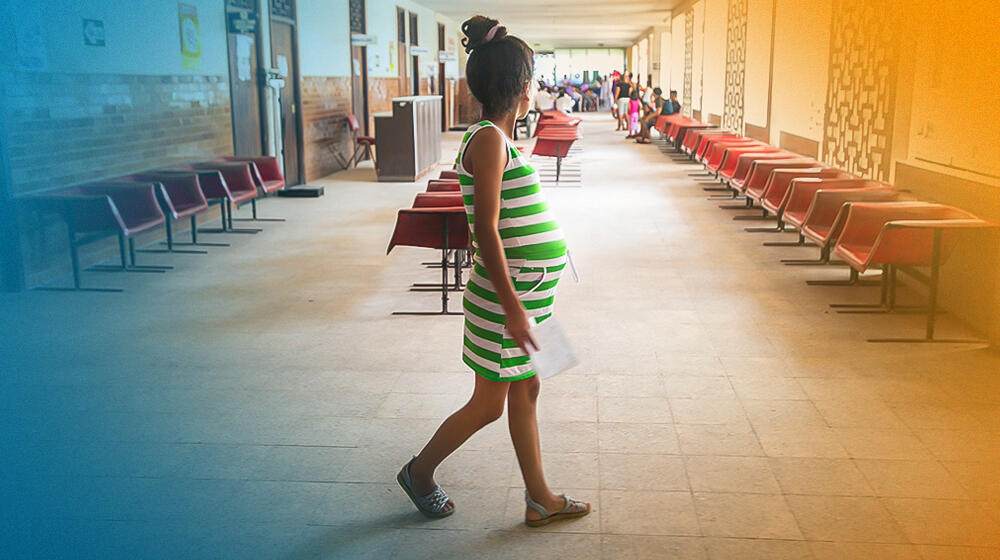In 2023, every day, up to twelve girls aged 10 to 14 became pregnant, and four became mothers in Peru. If these pregnancies occurred when the girls were under 14, they are considered a crime of rape according to current legal regulations. Additionally, every hour, nine adolescents aged 15 to 19 became pregnant, and five became mothers. This situation reflects generational, socioeconomic, and territorial inequalities that are rooted in gender inequality.
Violence and sexual abuse, control over the body, and limitations on sexual education and reproductive health services are some of the manifestations of this inequality.
The effects of early motherhood are long-lasting and can have a negative impact on the lives of girls and adolescents. In addition to school dropout, difficulties in accessing decent work, and poverty, these forced maternities also face pregnancy and childbirth complications, as well as limited access to healthcare. These circumstances result in physical and mental injuries, and even death. When pregnancy is the result of sexual abuse, there is also the risk of self-inflicted harm, including suicide. In 2023, maternal deaths in girls under 17 increased to 8%, compared to 5.1% in 2021 and 6% in 2022.
"The life of a girl should start as any other life should: as an open book in which she can write her own story. However, from the moment a girl takes her first breath, she is already at a disadvantage simply because she was born a girl." Natalia Kanem – Executive Director of UNFPA.
It is important to note that, in addition to the consequences on the lives of adolescent girls, early pregnancy and motherhood also have a significant economic impact. The economic cost arising from these pregnancies and births will be repeated every year throughout the productive lives of these young mothers, adding to the costs of previous and future generations. If an estimate is projected from 2021 to 2030, the accumulated economic cost of pregnancy and motherhood in girls and adolescents would be no less than USD 3,135 (three thousand one hundred and thirty-five) million dollars.
These figures highlight the need to invest in the prevention of teenage pregnancy and the promotion of progressive comprehensive sexual education that involves parents and guardians. It is crucial to involve men at an early age in these educational processes to deconstruct attitudes and practices that justify discriminatory gender norms that harm the integrity of girls, adolescents, and women.
Girls and adolescents represent great potential to accelerate the path toward the development of their communities and countries. Empowering their leadership, agency, and bodily autonomy is key. Strengthening the justice system and its operators to safeguard the integrity and repair the harm to girls and women in situations of violence and sexual abuse is essential. Guaranteeing access to sexual and reproductive health services for adolescents will not only benefit girls now but also their future and that of future generations. Increasing and focusing investments in this area will contribute to the well-being of adolescents, their rights to education, health, equal opportunities, and protection from harmful practices such as early unions. Ensuring access to therapeutic abortion, according to the legal framework, to save the life and prevent harm to the health of minors is also vital.
Key data:
- Of the annual births to adolescent mothers aged 15 in the last five years, at least three-quarters of these pregnancies occurred when they were 14 years old. Thus, pregnancies in girls aged 10 to 14 would number around 18,600 over those five years.
- In 2023, every hour in Peru, 5 adolescents aged 15 to 19 became mothers, and 9 became pregnant.
- In 2023, every day in Peru, 4 girls aged 10 to 14 became mothers, and 12 were pregnant.
- In 2023, the Ministry of Women and Vulnerable Populations (MIMP) registered and assisted more than 21,800 cases of girls and adolescents who were victims of sexual violence.
- According to ENDES, three out of four pregnancies or births to mothers aged 15 to 19 would have preferred to have postponed them.
Key resources:
- Publication: Map of Pregnancy and Motherhood in Girls and Adolescents in Peru.
- The digital dashboard with key figures, data, and messages on teenage pregnancy and motherhood in girls and adolescents.


